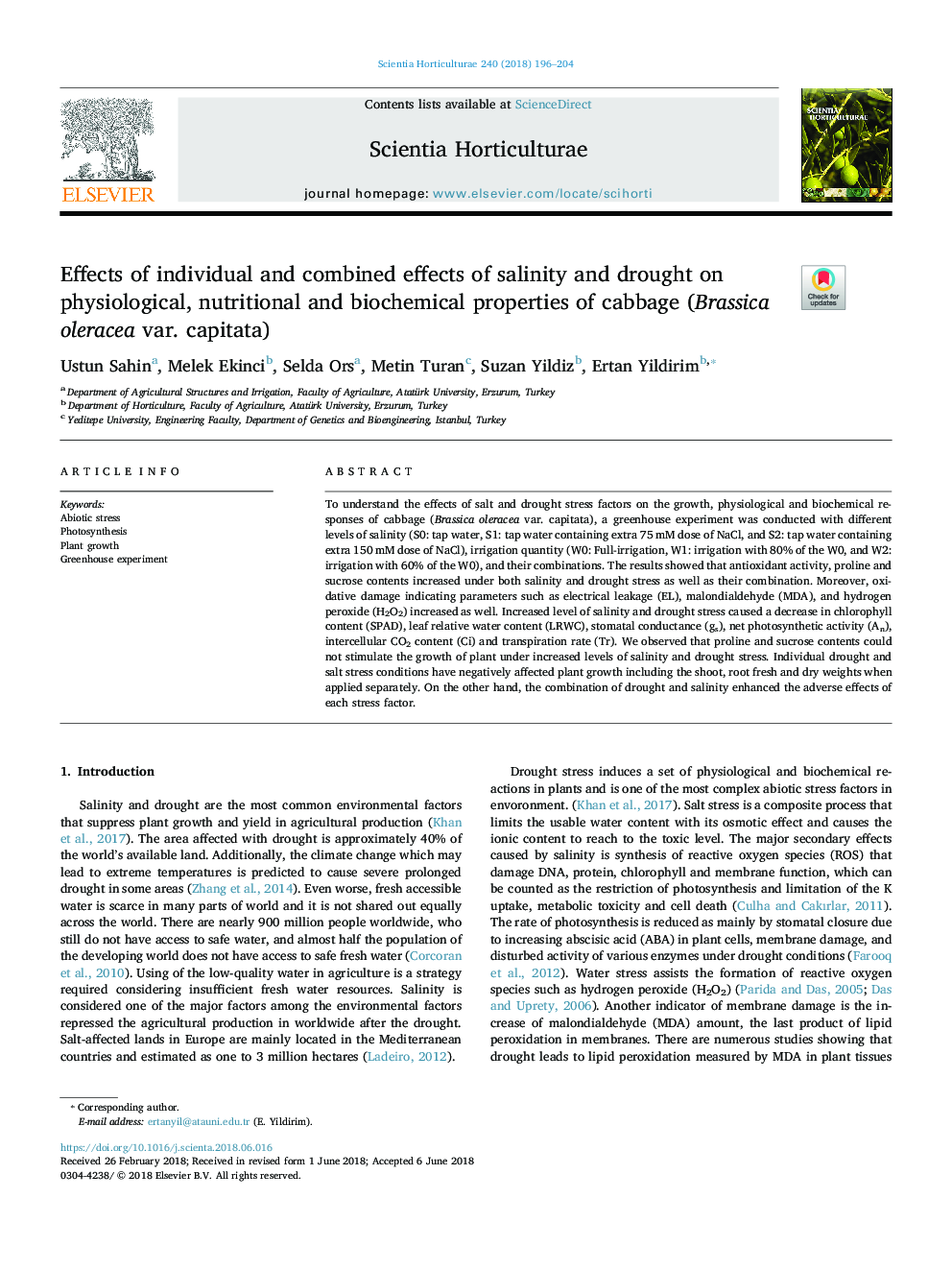| Article ID | Journal | Published Year | Pages | File Type |
|---|---|---|---|---|
| 8892387 | Scientia Horticulturae | 2018 | 9 Pages |
Abstract
To understand the effects of salt and drought stress factors on the growth, physiological and biochemical responses of cabbage (Brassica oleracea var. capitata), a greenhouse experiment was conducted with different levels of salinity (S0: tap water, S1: tap water containing extra 75â¯mM dose of NaCl, and S2: tap water containing extra 150â¯mM dose of NaCl), irrigation quantity (W0: Full-irrigation, W1: irrigation with 80% of the W0, and W2: irrigation with 60% of the W0), and their combinations. The results showed that antioxidant activity, proline and sucrose contents increased under both salinity and drought stress as well as their combination. Moreover, oxidative damage indicating parameters such as electrical leakage (EL), malondialdehyde (MDA), and hydrogen peroxide (H2O2) increased as well. Increased level of salinity and drought stress caused a decrease in chlorophyll content (SPAD), leaf relative water content (LRWC), stomatal conductance (gs), net photosynthetic activity (An), intercellular CO2 content (Ci) and transpiration rate (Tr). We observed that proline and sucrose contents could not stimulate the growth of plant under increased levels of salinity and drought stress. Individual drought and salt stress conditions have negatively affected plant growth including the shoot, root fresh and dry weights when applied separately. On the other hand, the combination of drought and salinity enhanced the adverse effects of each stress factor.
Related Topics
Life Sciences
Agricultural and Biological Sciences
Horticulture
Authors
Ustun Sahin, Melek Ekinci, Selda Ors, Metin Turan, Suzan Yildiz, Ertan Yildirim,
